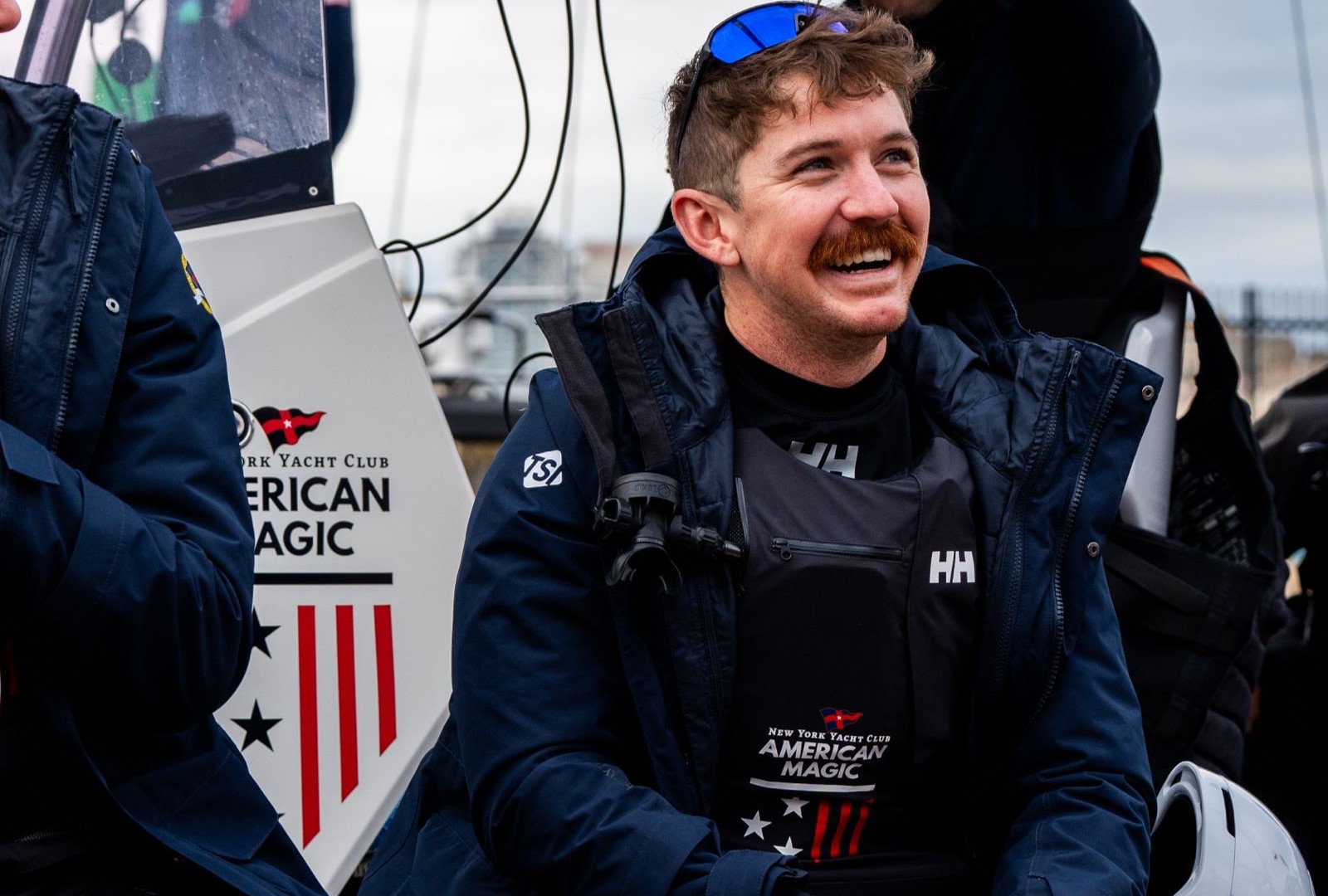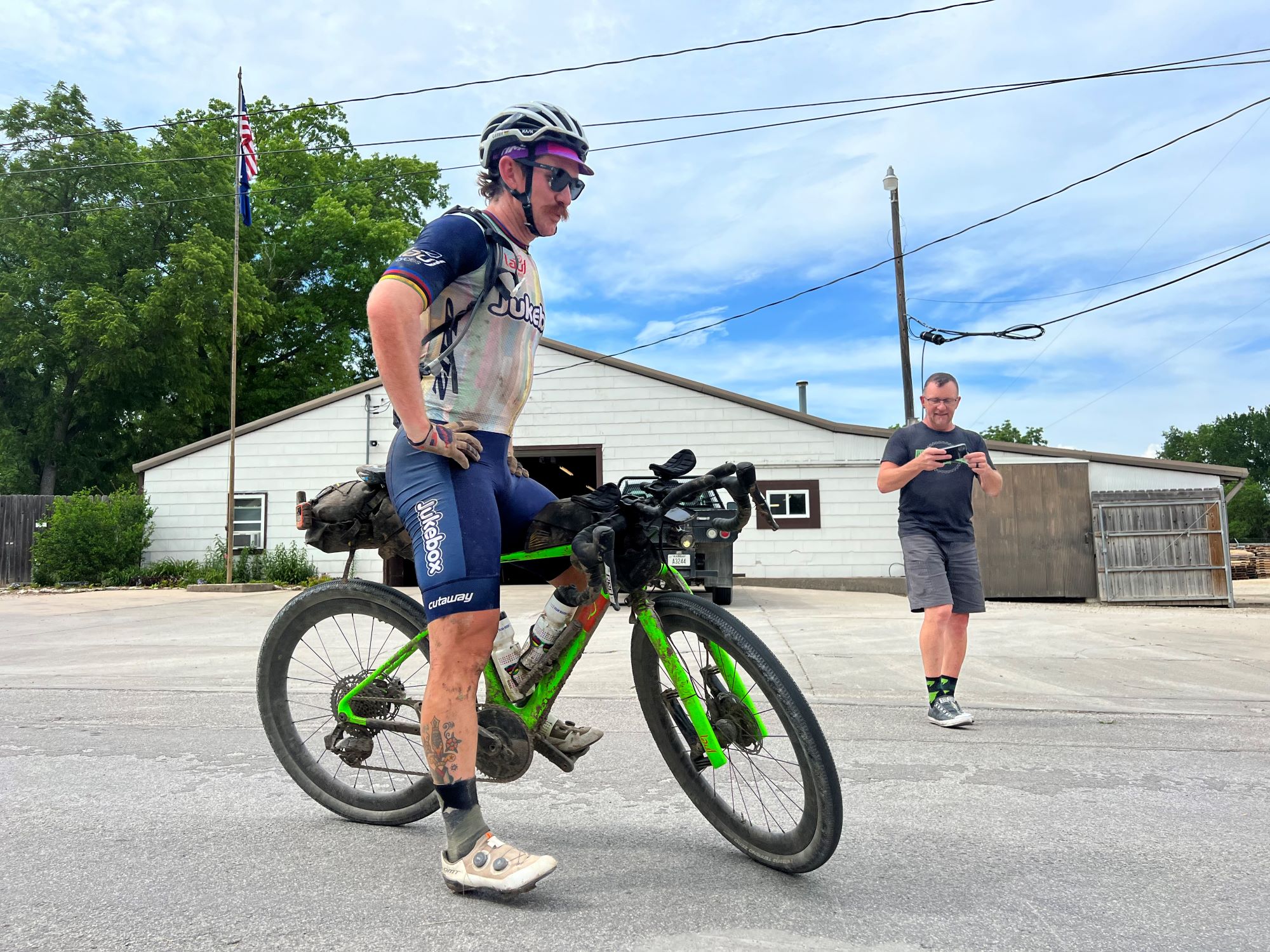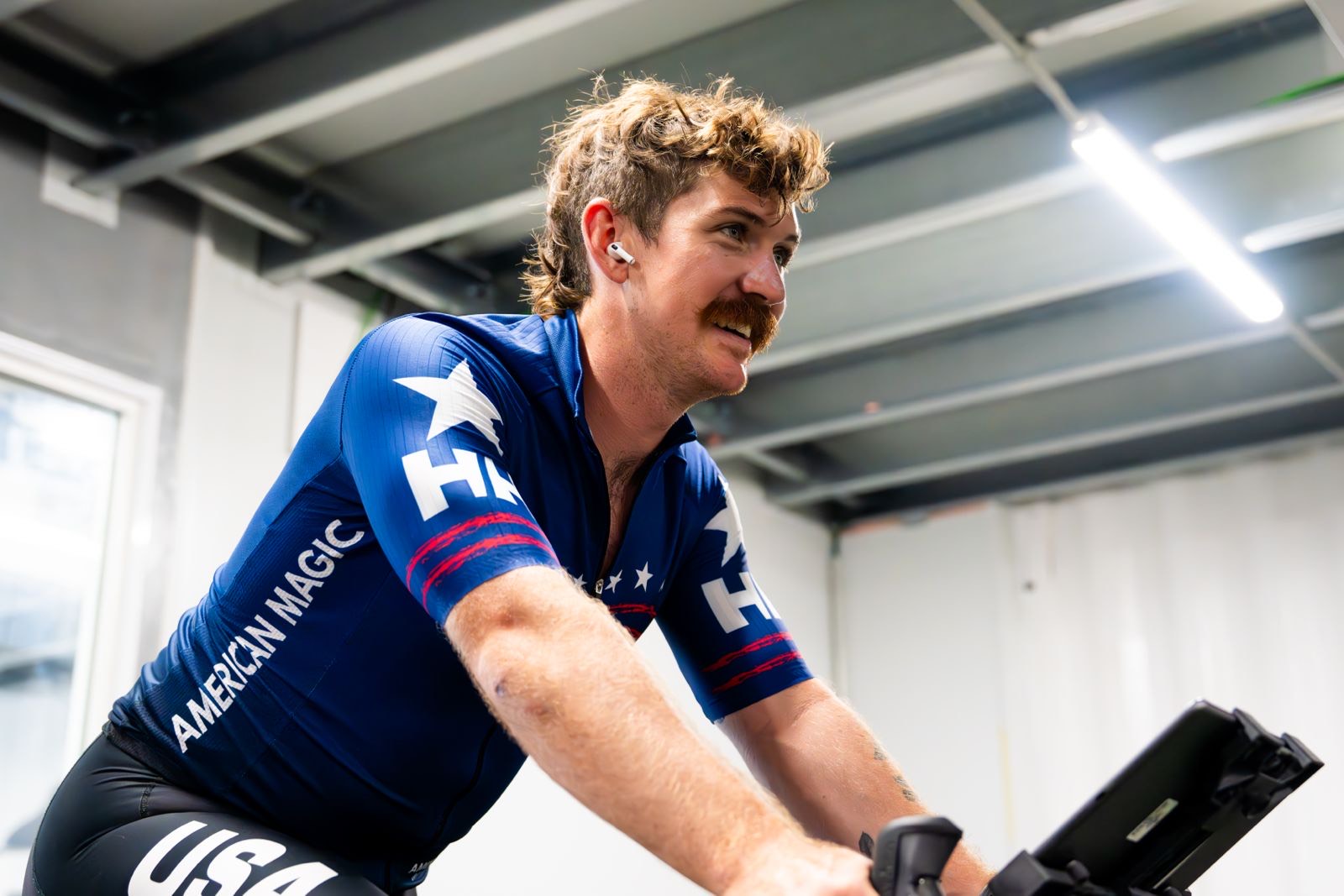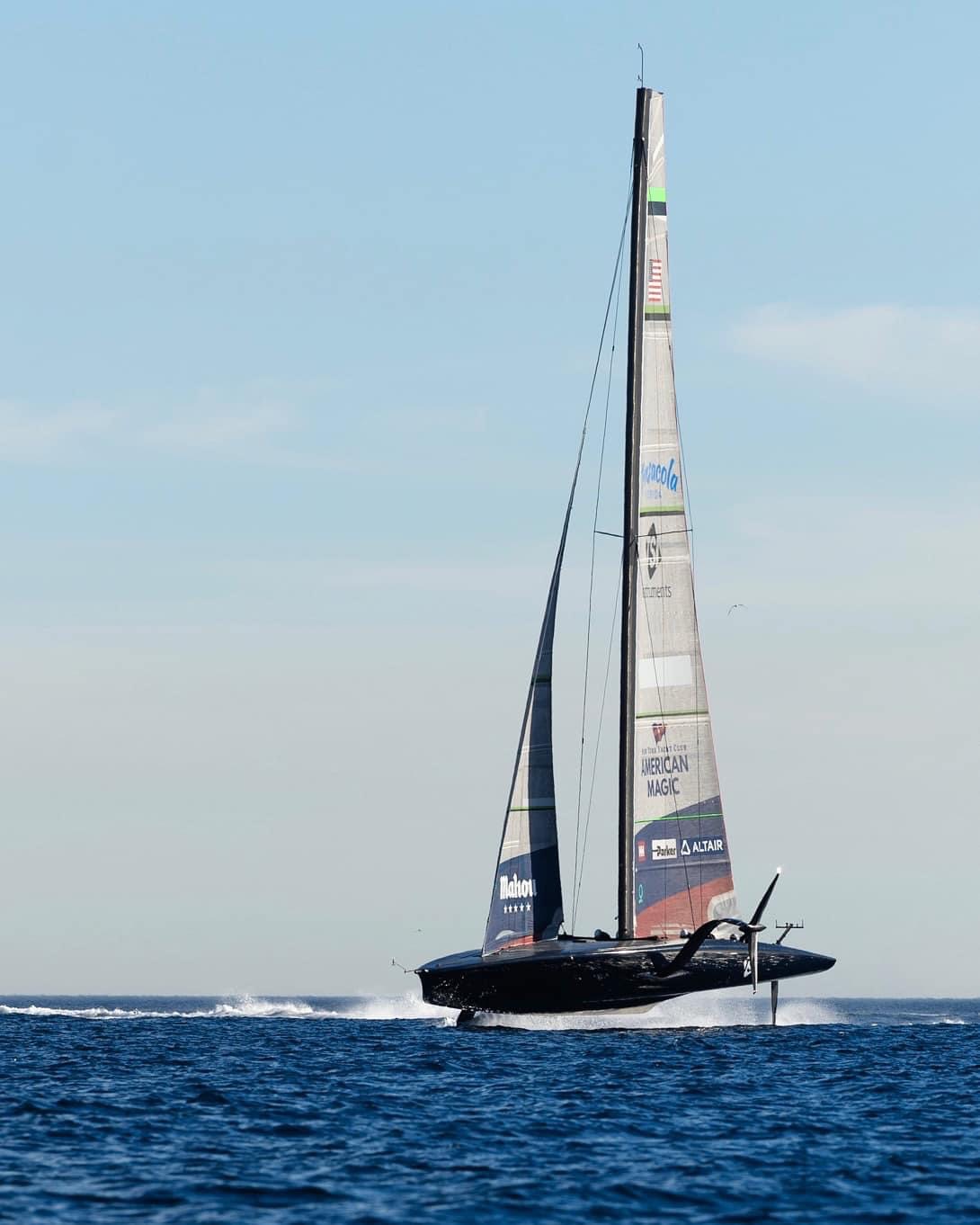
The America's Cup, the pinnacle event in competitive sailing, has a storied history dating back to 1851. It holds the distinction of being the oldest international competition still in existence of any sport.
The Cup is a match race between sailing yachts from two rival clubs: one from the "defender" that earned the honor in the previous edition and the other from a "challenger" seeking to claim one of the most-coveted trophies in sports history. In the upcoming Cup, former World Champion and World record-holding track cyclist Ashton Lambie hopes to write history as part of the challenging team called American Magic.
The 32-year-old mustachioed American is no stranger to head-to-head competition, but sailing?
Lambie explains the twist of fate that found him cycling below deck on a 75-foot boat, slicing through the water at over 50 mph:
"I've been fortunate to have some wild turns in my career, but nothing as wild as joining a sailing team for the biggest event in the sport. It was an odd coincidence that got me started! I've been lucky enough to work with SRAM for gravel and track for the past five years. SRAM also has some very passionate sailors who led the push for them to join with both parts and expertise for American Magic. They informed me about the team and encouraged me to check it out."
Ashton continued: "I always try to approach new or different journeys with curiosity, and even sailing on a boat was no different. I pushed some watts, and it was enough to get me out to Pensacola (the home base for American Magic), where I met the team and staff behind this project. After getting out there and on the boat, I was absolutely hooked."
The power needed to make the cut is in the range of 1,100 watts for 30 seconds, 580 watts for 4 minutes, and 450 watts for 20 minutes.
The last defense was in 2021. There isn't a set schedule for the America's Cup. The champion enjoys the spoils until the challenger drops the gauntlet, and then the technological, strategic, and highly secretive arms race begins.
The New York Yacht Club's American Magic's AC75 Patriot is on the razor's edge of sailing technology. Traditionally, the hydraulic power to move the mast, winches, and launch the 75-foot hull onto its hydrofoils at speeds over 50 knots was the job of crew members called "grinders" using hand cranks.
Engineering advancements have replaced hand cranks with a leg crank mechanism closely resembling a fixed-gear bike drivetrain, and the athletes that power them are called "cyclors." Four cyclors can do the work of 8 grinders.
"We're finding that cyclors bring much more power to the table," says Ben Day, American Magic's performance lead, in an interview with Sailing World.
"Cycling uses much bigger muscle groups; therefore, they can produce more power than arm grinders. And with the new AC75 regulations of reducing crew numbers (eight sailors total), we need to find that power in other ways. So, most teams are looking at cyclors at this stage. Glutes, quads, and hamstrings can produce more explosive power and more power for a longer sustained period."

The power demand to sustain foiling and maneuvers aboard the American Magic's AC75 is enormous. The hydraulic system can't be topped off, meaning the athletic performance of the cyclors directly impacts race outcomes. Swift raising and lowering of the foil enhance the boat's agility and responsiveness.
The yacht's hydraulic accumulator tank stores the pressure the cyclors generate, which is then converted into force by a hydraulic actuator. This power is essential when the boat performs maneuvers like tacking, jibing, or adjusting sail trim or the foil. As the pressure in the tank accumulates, the cyclors must pedal harder to fill it.
Lambie has enjoyed international acclaim for his exceptional raw power for years. He was the first man to break 4 minutes in the Individual Pursuit—3:59.93 at an average of 38.5 mph on August 18, 2021. He then followed it up with a Rainbow Jersey performance at the 2021 UCI Track World Championships. To win that race, journalist Zach Nehr states, he averaged 530 watts for 4:05.060, peaking at over 1,100.
Yet even for a world-class track cyclist, meeting the power demands necessary to qualify for the cyclor squad is no easy feat.
"As with any big journey, there are always high and low spots. Getting out to Pensacola for the first few camps was incredible. I got to sail on a 75-foot boat that flew out of the water at 50 mph. Unfortunately, the stormy seas prevented me from making the initial round of cuts to the Cyclor squad. I was gutted but was determined to work towards the faintest hint of joining this incredible team. So in the hope of 'There's a possibility of more spots opening up in October,' I doubled down and continued to keep working for any extra watts I could get."
My previous 20-minute all-time PB was during a Zwift TTT, and I managed 413w. It's been a bit of a jump from there.
Ashton Lambie
While the training and performance of the American Magic's cyclor crew are highly guarded secrets, the physical demands and minimum standards are mind-blowing. Most races are between 25 and 45 minutes, requiring long sustained baseline pedaling efforts and frequent high-intensity bursts lasting minutes. Sources indicate the power needed to make the cut is in the range of 1,100 watts for 30 seconds, 580 watts for 4 minutes, and 450 watts for 20 minutes.
Lambie, careful to keep the secret under wraps, confirmed, "A big part of the Cup is the secretive advantage of all the teams. The research and development of the entire project are huge parts of maintaining an advantage, so I can't get into too many details. That said, my previous 20-minute all-time PB was during a Zwift TTT, and I managed 413w. It's been a bit of a jump from there."

It's not a mystery that the power-to-weight ratio is a significant determinant of cycling success, but it's not the case for a cyclor. Pure watts rule on the water, and the combined weight of the eight-person crew must be between 680 and 700 kilograms (85 to 87.5 kg per crewmember).
As Lambie explains, finding elite athletes that fit the mold hasn't been easy. It is more than just a matter of bringing together a bunch of top riders.
"Really, the toughest part has been gaining weight. Part of the rules is the crew (8 guys, four cycles, and four afterguards who control the boat) all have to be within a weight range. So, ideally, all the guys weigh roughly the same. And since we aren't climbing, we want the absolute max watts."
However, training is training, and Lambie is committed to the mindset change for the opportunity.
'Just like the specific metric in track cycling is lap speed, we're only focused on watts, not watts/kg. So, while my kgs have also intentionally gone up, so have the watts. That's been a big change for me, but it's just like training for any other specific metric."
Lambie admits that becoming comfortable on a boat on the open sea with a role critical to the team's success is another story.
"It's a pretty steep learning curve to learn how to sail and to understand all of the terminology that goes into it. It's basically another language, in the same way cycling is. If you tell a sailor about how you kept another rider on your hip in the echelon of a century ride, they'll be just as confused as when you hear them talking about luffing the jib on a tack!"
One thing you can't teach, and that the Nebraskan Lambie has in excess, is an insatiable zest for adventure and the quest to find the next life challenge.
Really, the toughest part has been gaining weight...since we aren't climbing, we want the absolute max watts.
Ashton Lambie
When the American Magic coaches called him while he was at Sea Otter and asked, "So can you come out to Pensacola next week? And can you come out to Barcelona until October of 2024 for racing?" he set off for the voyage of a lifetime.
For an athlete of Lambie's talent and pedigree, the day-to-day training to be the best in the world at something is an undeniable force. The cyclor challenge is an extension of his unmatched cycling career focused on pursuing excellence and unknown experiences. Carving a place in history as one of the first cyclists to crossover to the pinnacle of sailing is impossible to comprehend.
The synergy between cycling and sailing, two seemingly unrelated disciplines, has given rise to an intriguing exchange of technology and scientific insights. Adopting cyclors represents a forward-looking approach, enabling a technology-driven and applied-sciences sport to seamlessly incorporate elements from a distinct sport and leverage its technological advancements.
Lambie doesn't know where the voyage will take him, but he can assure you, "I'm going to go out and keep smashing it every day with my eye on the big goal down the road of winning the America's Cup in 2024."
The race is scheduled for October 2024 on the waters off the coast of Barcelona, Spain.








